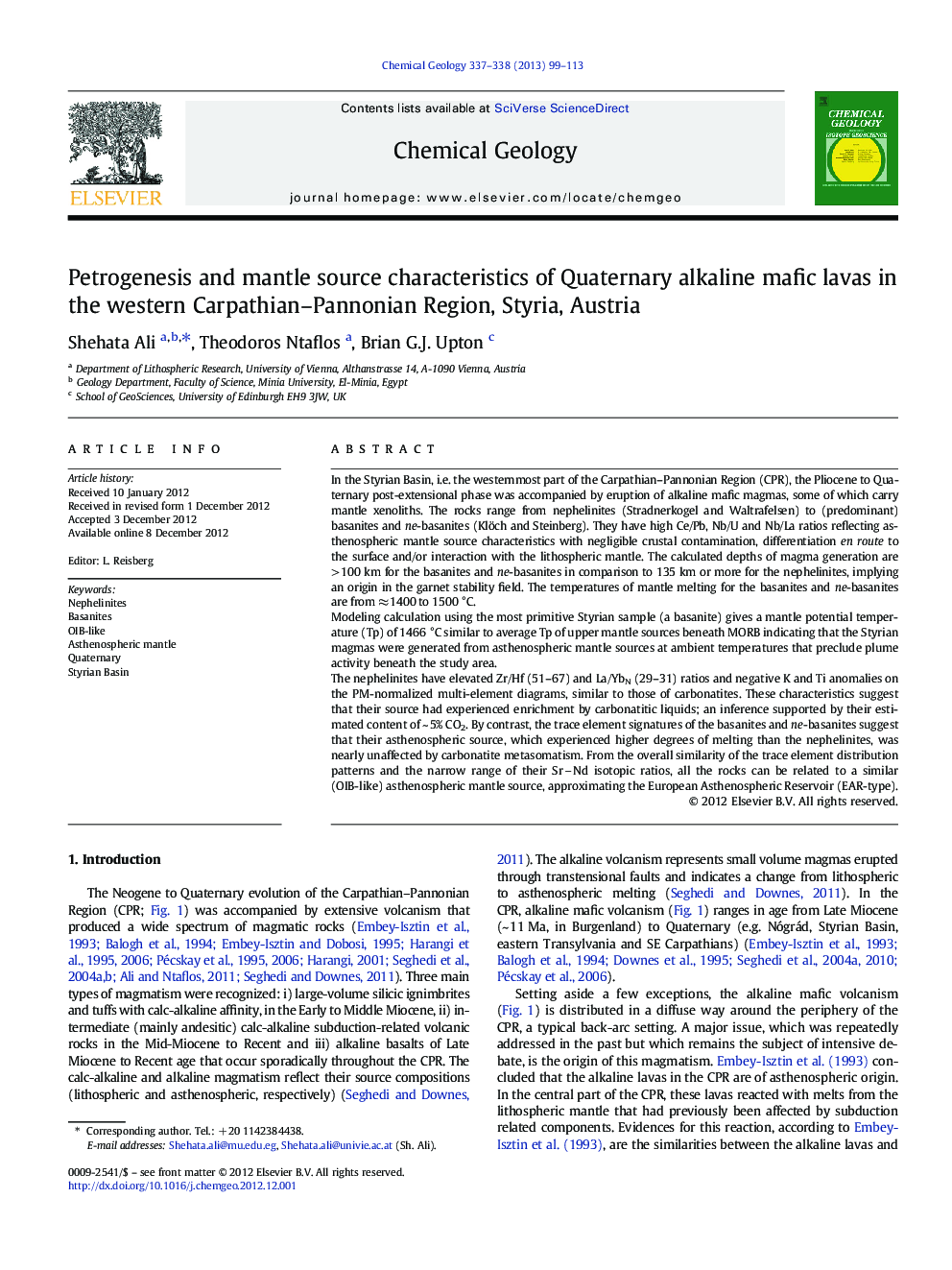| کد مقاله | کد نشریه | سال انتشار | مقاله انگلیسی | نسخه تمام متن |
|---|---|---|---|---|
| 4699209 | 1637630 | 2013 | 15 صفحه PDF | دانلود رایگان |
In the Styrian Basin, i.e. the westernmost part of the Carpathian–Pannonian Region (CPR), the Pliocene to Quaternary post-extensional phase was accompanied by eruption of alkaline mafic magmas, some of which carry mantle xenoliths. The rocks range from nephelinites (Stradnerkogel and Waltrafelsen) to (predominant) basanites and ne-basanites (Klöch and Steinberg). They have high Ce/Pb, Nb/U and Nb/La ratios reflecting asthenospheric mantle source characteristics with negligible crustal contamination, differentiation en route to the surface and/or interaction with the lithospheric mantle. The calculated depths of magma generation are > 100 km for the basanites and ne-basanites in comparison to 135 km or more for the nephelinites, implying an origin in the garnet stability field. The temperatures of mantle melting for the basanites and ne-basanites are from ≈ 1400 to 1500 °C.Modeling calculation using the most primitive Styrian sample (a basanite) gives a mantle potential temperature (Tp) of 1466 °C similar to average Tp of upper mantle sources beneath MORB indicating that the Styrian magmas were generated from asthenospheric mantle sources at ambient temperatures that preclude plume activity beneath the study area.The nephelinites have elevated Zr/Hf (51–67) and La/YbN (29–31) ratios and negative K and Ti anomalies on the PM-normalized multi-element diagrams, similar to those of carbonatites. These characteristics suggest that their source had experienced enrichment by carbonatitic liquids; an inference supported by their estimated content of ~ 5% CO2. By contrast, the trace element signatures of the basanites and ne-basanites suggest that their asthenospheric source, which experienced higher degrees of melting than the nephelinites, was nearly unaffected by carbonatite metasomatism. From the overall similarity of the trace element distribution patterns and the narrow range of their SrNd isotopic ratios, all the rocks can be related to a similar (OIB-like) asthenospheric mantle source, approximating the European Asthenospheric Reservoir (EAR-type).
► Silica undersaturated lavas with high MgO (> 6 wt.%)
► They comprise nephelinites and dominant basanites and ne-basanites.
► Negligible crustal contamination and/or interaction with the lithospheric mantle
► Alkaline mafic lavas of OIB-like characteristics
► Similar asthenospheric source for the Styrian mafic lavas
Journal: Chemical Geology - Volumes 337–338, 28 January 2013, Pages 99–113
